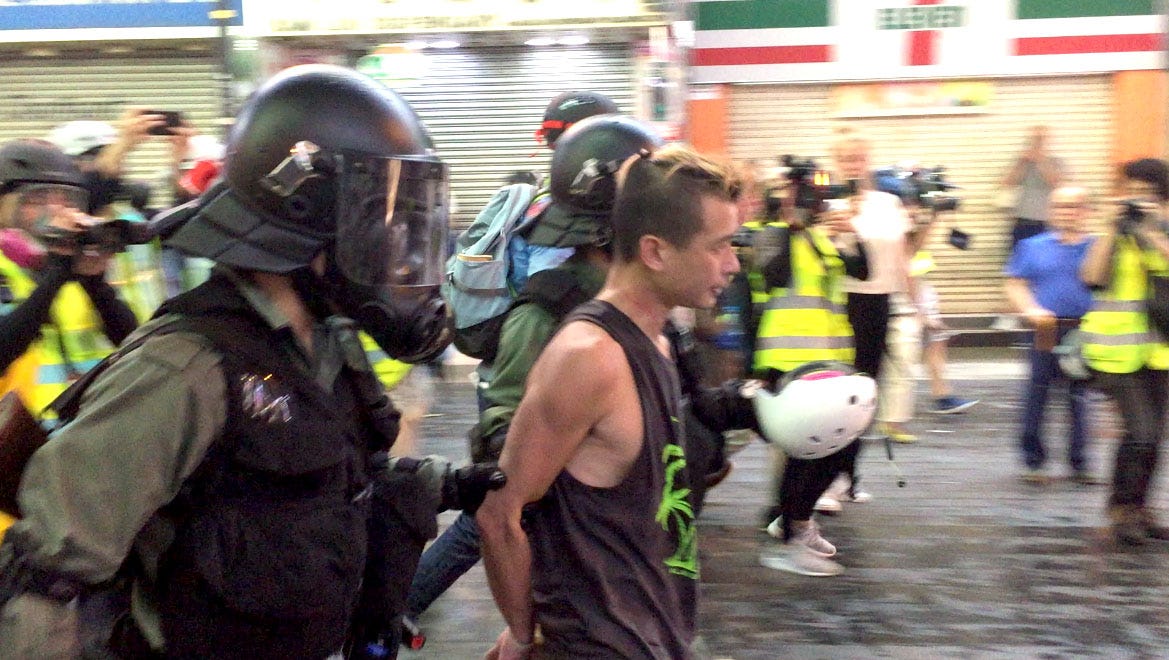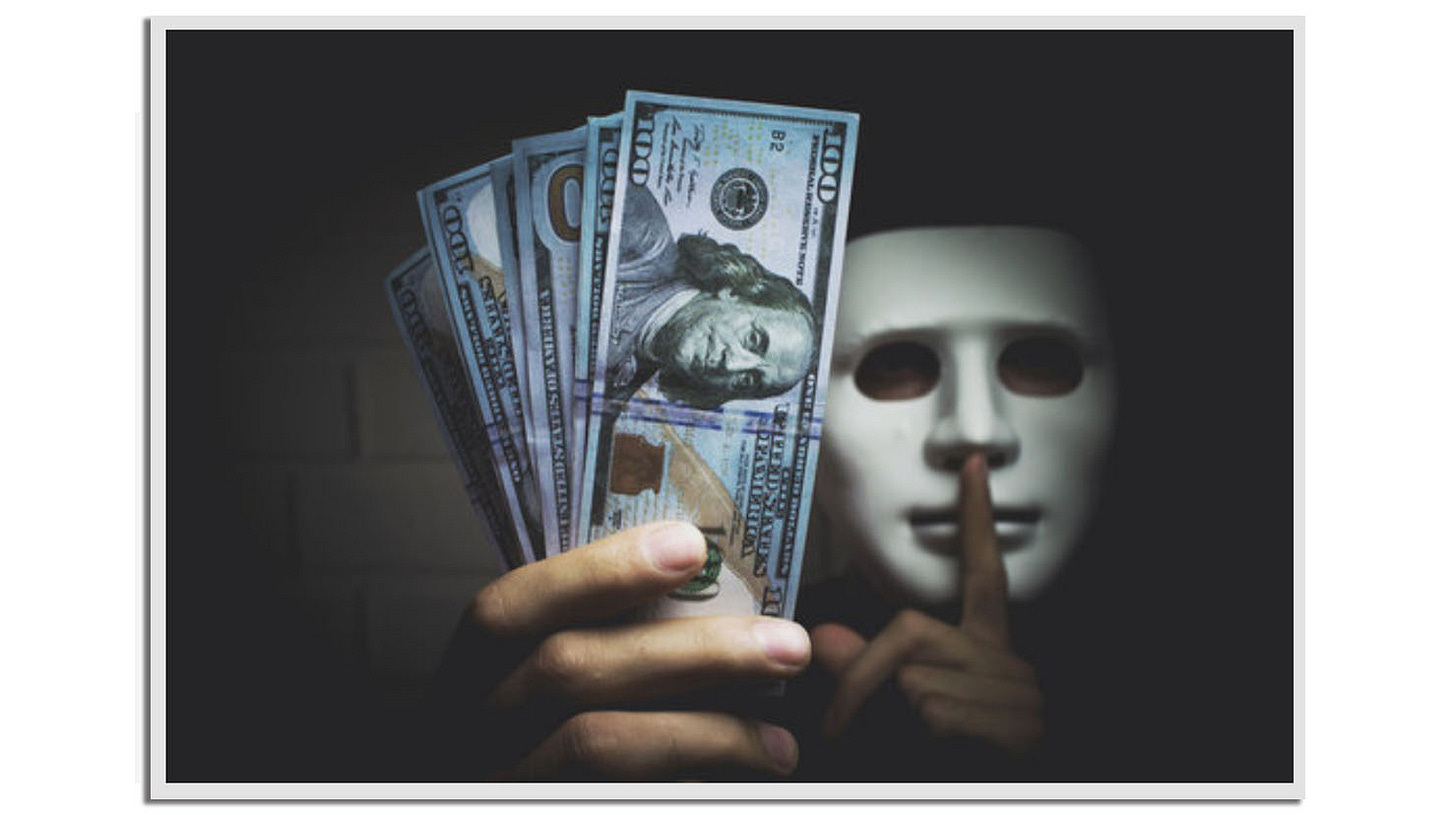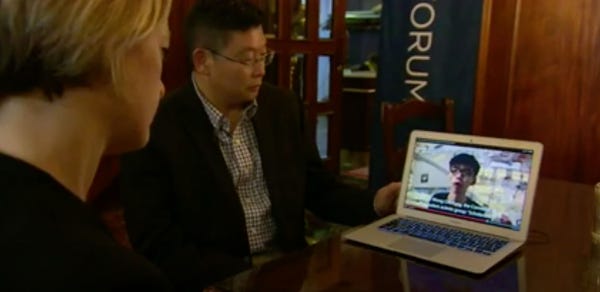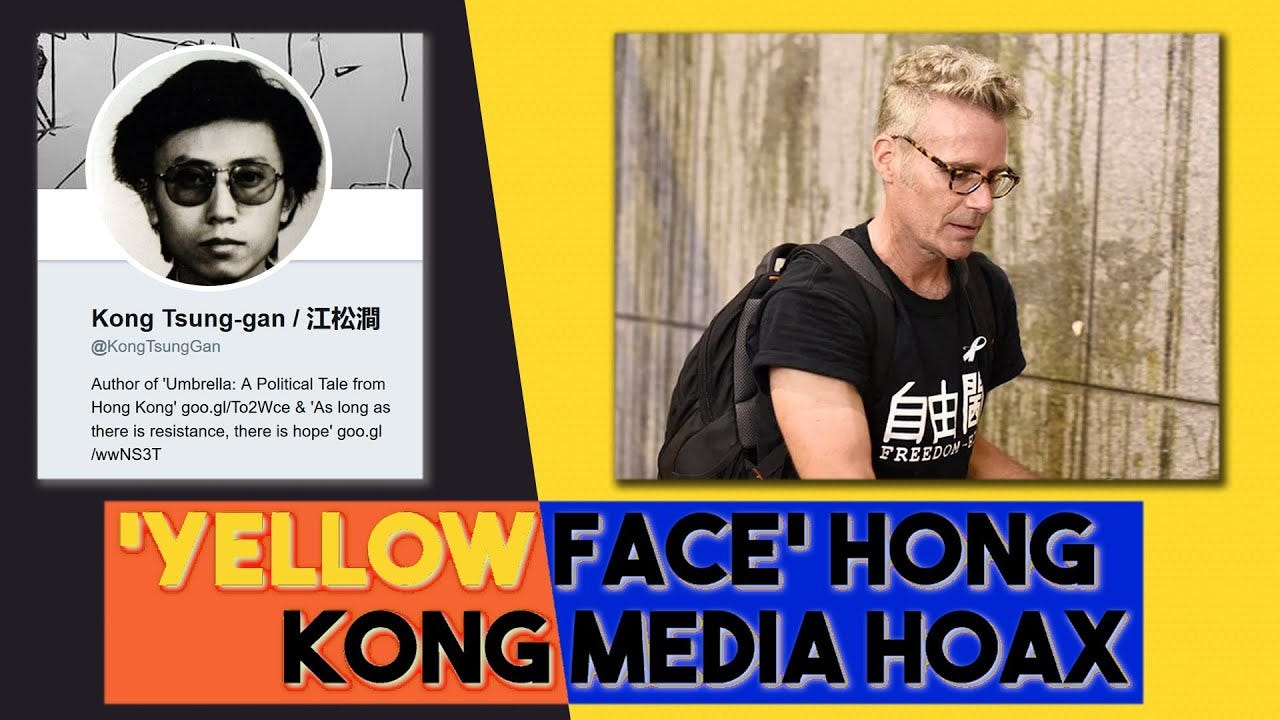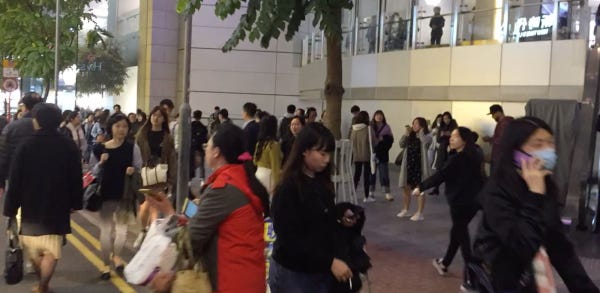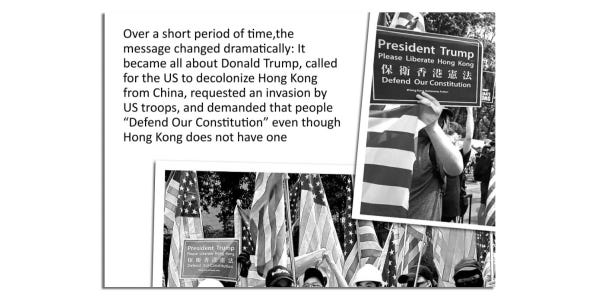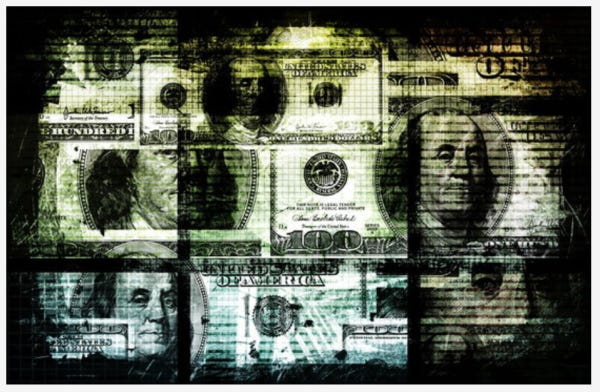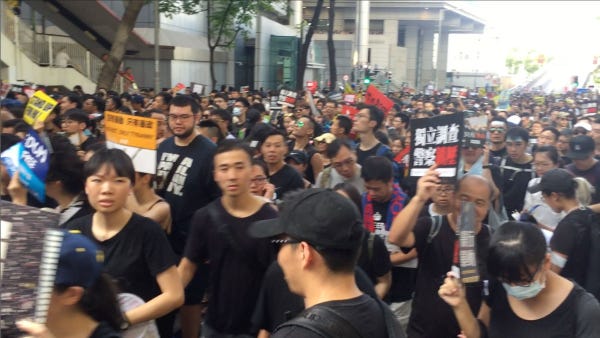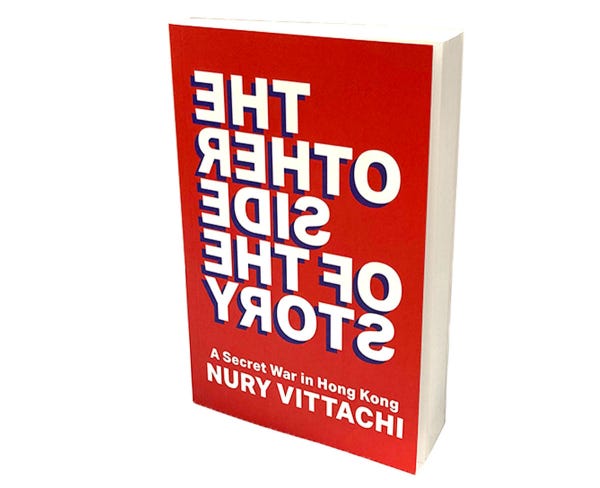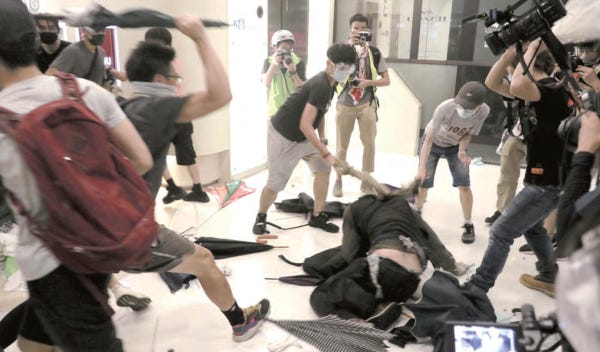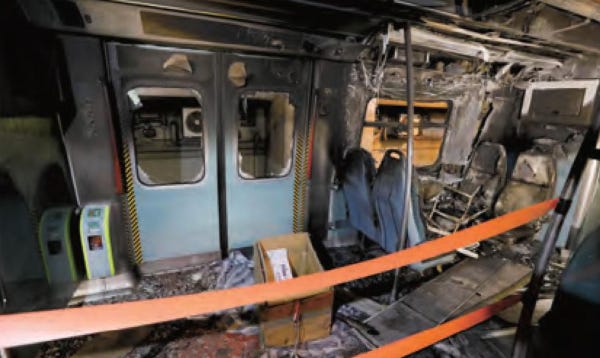Hong Kong protests ‘driven by the West’
'Revolution industry' professionals admitted working with activists
PEACEFUL PROTESTS WHICH TURNED violent in Hong Kong last year were stirred up and financed by hidden geopolitical groups to destabilize China.
Professional “revolution consultants” from the United States and Europe showed radical protesters how to maximize civil disruption while keeping the media on side.
American agents paid millions for the development and daily maintenance of hi-tech tools to enable protesters to evade detection.
A secret high-level committee of Hong Kong senior activists worked with Western agents to coordinate and amplify the so-called “leaderless” protests.
But the alliance was unstable, sometimes got things farcically wrong, and eventually spun out of control, with radicals planning a deadly campaign involving terrorist-grade explosives, including chlorine bombs.
The untold story behind the 2019 civil unrest in Hong Kong comes from my new book, The Other Side of the Story: A Secret War in Hong Kong.
It tells how my network and I, mostly people who have been critical of China for decades, gradually realised that American agents were using us and other Hong Kong people for their own ends.
('Leaderless, spontaneous' protests were carefully organised, financed and branded)
SECRET CONNECTIONS
The uprising in Hong Kong in 2019 was widely reported as a leaderless, spontaneous uprising against a proposed law to deport dissidents to mainland China. But it was really a manipulated campaign that cruelly exploited Hong Kong people’s natural fears. What happened was deeply unfair to both honest, peaceful protesters, and to people who favoured a positive relationship with mainland China.
Hong Kong’s political opposition has been financed by the CIA in an underhand way for decades. Then, from January 2013, Hong Kong activists received practical training in street-protest strategy and media control through meetings and exchanges with members of the professional “revolution industry”.
(Activists started working with professional revolution consultants in 2013--and the BBC even did a live report from one of their Oslo meetings in late 2014, where they admitted the relationship had been going for nearly two years.)
The activists developed a working relationship with the Oslo Freedom Foundation and the Albert Einstein Institute, and met staff from the Centre for Applied Nonviolent Action and Strategies (known as CANVAS) set up in 2004 by Serbian revolution specialists Srđa Popović and Slobodan Đinovic.
All three groups specialize in providing practical tools and strategies for using street protests to over-turn elected or non-elected governments. Training materials were issued for a thousand Hong Kong people, the revolution consultants said.
BRANDING WAS A KEY FOCUS
One major focus was branding. The revolution blueprint specified that the protesters should brand themselves “democratic”, “honest”, “popular” and “progressive”, and anyone who disagreed with them should be branded “dictatorial”, “illegitimate”, “corrupt” and “ruthless”. This would guarantee that media coverage would be biased towards the pro-independence lobby, despite the fact that their campaign went directly against the wishes of the Hong Kong people.
The website of the Serbian revolution consultants provided links to the works of Kong Tsung-gan (above), who gave numerous quotes to the international media claiming to be a local Hong Kong born voice—but who was eventually exposed as American activist Brian P. Kern in “yellowface” by my sources. The report first appeared in my column in the Standard, a Hong Kong daily newspaper, in December of 2019.
At the time, Kern's main promoter, a website called the Hong Kong Free Press, demanded the information be removed from the Internet and threatened to sue the newspaper for revealing it.
SOURCES OF THE DATA
The main sources of the information in the new book were Hong Kong parents, especially mothers. I received up to a thousand messages a day from local adults, fed up that only radicalized youngsters and angry politicians were ever quoted by the mainstream media.
Journalists simply ignored the vast majority of the Hong Kong community, which is largely apolitical: fewer than half of all adults in the city vote.
After the peaceful march on June 9 was turned violent by a group of black-clad agitators, parents attended the protests and kept detailed records. Initially, many of us believed the radicals were sent by Beijing, and were shocked to find that their backers were members of a secret committee featuring local people and Americans.
FARCICAL ERRORS
Despite the secret civil disobedience committee’s extensive planning efforts and big budget, co-ordination during the actual protests in 2019 was poor, and the hidden subversive groups accidentally showed their hands on numerous occasions, sometimes farcically.
For example, several times the secret American participants flooded the protests with placards saying “Defend Our Constitution”, despite the fact that Hong Kong has no constitution. Instead it has a document called the Basic Law which protesters hate.
In September of 2019, the protesters were given a banner to carry which said “TRUMP 2020” with no reference to Hong Kong or mainland China.
After several of us publicly pointed out the presence of obviously alien placards written in suspiciously accurate native English, alternative sets of placards appeared in artfully misspelled English.
GENEROUS FUNDS
Significant amounts of cash were sent by the US to anti-China activists in Hong Kong. In 2019, America officially sent US$643,000 (about HK$5 million) to anti-China activists in Hong Kong as its annual donation through the National Endowment for Democracy, the CIA’s regime-change arm. NED’s own records showed that it had sent US$22 million (or HK$170 million) to mainland China and or Hong Kong since 2014 to “advance the cause of democracy”.
But that was just of many sums sent through a number of groups. Many were steered through a very powerful but low profile office called the US Agency for Global Media. A US source called the Open Technology Fund supplied about US$2 million, Time magazine reported. The focus of those secret funds was to enable radical protesters to evade law enforcement and maintain police-proof communications channels.
A proportion of this money was on record yet no major media outlet from the international press investigated them or even mentioned them, instead telling readers that they should disregard claims of international interference. The New York Times said the notion that foreign forces were involved in the protests was “a shopworn canard” originated by the Chinese communist party.
(The interference was "deeply unfair to honest, peaceful protesters, and to people who favoured a positive relationship with mainland China)
AIM OF THE PROTEST
The CIA’s aim for the 2019 civil unrest was to create enough mayhem to provoke Beijing into responding with a drastic move such as sending in PLA troops or removing Hong Kong’s common law system. This could then be announced as the failure of the “one country, two systems” policy, which would scare both Hong Kong and Taiwan away from their growing engagement with mainland China and back into US arms.
Ultimately, the CIA wanted to ensure that Hong Kong could remain a US intelligence base and Taiwan would remain an intelligence and military base for several years longer.
CONSIDERED A FAILURE
But by early 2020, the project was seen as a failure because of Beijing’s unexpectedly high level of patience: it had neither sent in troops, nor removed Hong Kong’s judiciary.
When Beijing introduced a US-style national security law in Hong Kong in the summer of 2020 to make foreign interference more difficult, the players decided to paint this as “the death of one country, two systems”—despite the fact that only three individuals have been charged under the new law, and the Hong Kong press continues to freely criticize the local government and Beijing—if anything, it is more critical than ever.
CLEAR INTERFERENCE
By any measure of geopolitical manoeuvring, the extent of US activity and involvement in Hong Kong politics is extraordinary. Had Chinese or Russian sources equipped, trained or financed anti-government elements to this level in the United States, the UK or Australia, it would be considered an outrage.
The natural nervousness about mainland China from a portion of the city’s public could be “weaponized” in Hong Kong street protests—and that word came from the Oslo Freedom Foundation, not from its critics.
WHITEWASHING THE BIGOTRY
The expert skills in media presentation ensured that major news organizations, including Fox, CNN, BBC, Reuters, the New York Times, the Guardian, the Washington Post, AFP, and Associated Press, would present news reports slanted against China, despite Beijing’s non-involvement in the Hong Kong protests.
(Police were painted as the cause of the trouble, despite the huge amount of destruction, and even deaths, caused by protesters.)
The international media downplayed or omitted coverage of Hong Kong’s frighteningly illiberal radicals burning numerous shops and restaurants set up by mainland China immigrants, trashing the offices of democratically elected politicians, wrecking the public transport systems and attacking people in the street for having the “wrong” accent.
SPLINTERING COALITION
The pay for violence was generous. Police said that records at one of the funds used by protesters showed that a 18-year-old man received HK$48,000 (about US$6,250) for participating in demonstrations for about a month.
The secret coalition splintered in the fall of 2019, when the most dangerous elements started stockpiling the material used for chlorine bombs and tri-acetone tri-peroxide, an explosive used in tragic large-scale terrorism cases in Sri Lanka and London.
INARTICULATE OFFICIALS
The parents and I are also critical of China’s officials in the city and Hong Kong’s own government apparatchiks. They were so inarticulate and robotic, that when they told the truth, which was that much of the trouble stemmed from an outrageous level of foreign interference, they made it sound like a lie.
DEFENDING STUDENTS
But I defend Hong Kong’s university students, most of whom took no part in any violence. At one major flashpoint in the dispute, at Chinese University, the masked, black-clad figures who held a press conference were actually not students at all, but radical protesters unconnected to the university.
Similarly, 95 per cent of the participants in another key event, popularly known as “the siege of PolyU” had no connection to Polytechnic University. Instead, the trouble came from radicalized young people who had been wrongly told that police had secretly killed “thousands” of innocent people.
(The media reported that 1600 "students" were besieged at PolyU, but a study afterwards revealed that only 46 had any connection with the university)
HARDWORKING PEOPLE
The media served the people of Hong Kong poorly, falsely splitting them into two opposing camps, one which they sanctified and one which they demonized.
The truth is that the majority of members of the Hong Kong public were at neither extreme. They were and are hardworking, balanced, intelligent, law-abiding people, with an attitude to mainland China that is neither over-trustful nor irrationally hostile. I know, because they sent me tens of thousands of messages over that tumultuous year making that clear. This book is dedicated to them.
Income from the book goes to a non-profit foundation for Hong Kong youth.

